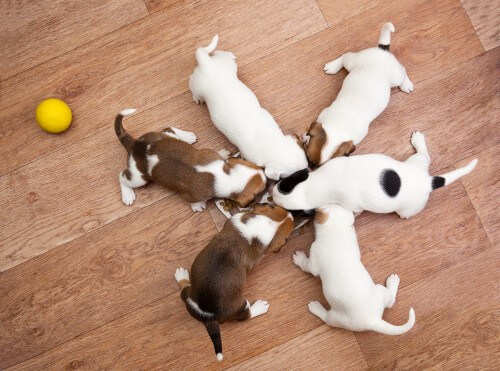Not every wagging of the tail indicates the dog's happiness. The dog's tail has many functions - with its help it communicates with the environment, swims, keeps its body balanced while running, and even hints to us about its loneliness
Written by: Dr. Doron Neri - veterinarian, and Nitzan Delitsky - chief technician, Ramat Hasharon-Herzliya Veterinary Center,

We have always thought that a wagging tail is a sign that the dog is happy to see us or that it is a friendly dog that really wants to play with us. This is not necessarily true! When the tail wag changes depending on the dog's mood and character. A dominant and aggressive dog will have a short, high and stiff tail, while a submissive and non-dominant dog will have a loose and wide tail.
Dogs use their tails for communication. They express happiness, joy, aggressiveness, stress and various emotions by wagging their tails. Sometimes just a glance at the tail is enough to know what the dog is thinking and what is going through his mind.
What does the tail mean?
The shape of the tail varies between different dog breeds, and some dogs have no tail at all. The tail has between six and 23 vertebrae as well as ligaments and muscles responsible for moving up, down and sideways. When the wagging of the tail that combines with the movement of the dog's body is its form of communication, which expresses different emotions:
Indecisiveness: When a wagging tail indicates that the dog is indecisive. The more times the dog wags its tail, the more we will know that it is debating and not sure what to do - stay with us or go home for example.
Fear and tension: if the dog hides its tail under its body, this is a sign that it is afraid of something, that it feels uncertainty, apprehension, surrender or that it is trying to appease us.
Joy: when the dog wags its tail high and its body moves with its tail - we will know that it is happy and happy. This situation is familiar to us when we return home after school and the dog is excited to see us. It makes us happy!
Curiosity and concentration: when the dog's tail stands steady in a straight position, at the height of the body, but without movement - it is focused on something or curious to see what will happen.
Familiarity: When dominant dogs meet others they will raise their tails so that the other dog can sniff them and the scent they emit. On the other hand, when a cowardly dog meets another dog - he will put his tail in and prevent the other from smelling him because he is not sure of himself, afraid of his status. He tries to hide his scent so the other dog doesn't notice him.
Uncertainty: when the tail is below the height of the body, but the dog wags carefully and apprehensively - this is a sign that he feels challenged and insecure. This insecurity may cause the dog to get into a fight with another dog. When the tail is pointed above the height of the body, the dog stands upright and its ears are raised upwards - this is a situation of threat and a challenge to the other dog.
Why does the dog need a tail?
Besides different ways of communication, the dog's tail is also used for physical needs:
- Body balance: when the dog runs and makes sharp turns, its tail is used for balance and to maintain the stability of its four legs. Usually the fast running dogs have a thin and long tail. Using the tail to balance and stabilize the body is reminiscent of a lullaby walking with a long pole for balance.
- Swimming: Some dogs use their tails to swim. These are usually dogs with a thick tail and a tangle of hair, which is used as a paddle in the water.
- Loneliness: When a dog chases its own tail, it doesn't do it as a game or amusement. This situation is very disturbing and not healthy for our dog at all. This usually happens when the dog is lonely, bored and does not play with other dogs. In such cases the dog develops a behavior disorder - it sees its tail as a playmate and starts chasing it. Scientists see in this situation behavioral "tics", such as walking back and forth, chewing the tail, compulsive licking of feet. However, not all tail chasing is a sign of loneliness. Sometimes a dog has fleas at the base of its tail, and it tries to grab its tail to scratch the irritated area. This thing requires treatment to get rid of the fleas!
Tail diseases
There are diseases that can develop in the dog's tail:
Trauma: The dog's tail is injured and bleeding because it wags its tail many times near cabinets, tables and other furniture in the house, and is injured as a result. This phenomenon is common among Amsteps, Weimaraners, Weasels, Pitbulls, and other breeds with strong tail muscles. There are many blood vessels in the tail, and there are dogs whose tails constantly look injured and bleeding.
Alopecia: loss of hair in the tail, which results in a rat's tail appearance.
Dermatitis of the base of the tail: a skin disease that causes itching in the tail area. This disease is usually common among breeds born with button tails such as bulldogs and boxers.
The article appeared in the November issue of Young Galileo – Monthly for curious children
Want to read more? To receive a young Galileo magazine as a gift
More of the topic in Hayadan:
